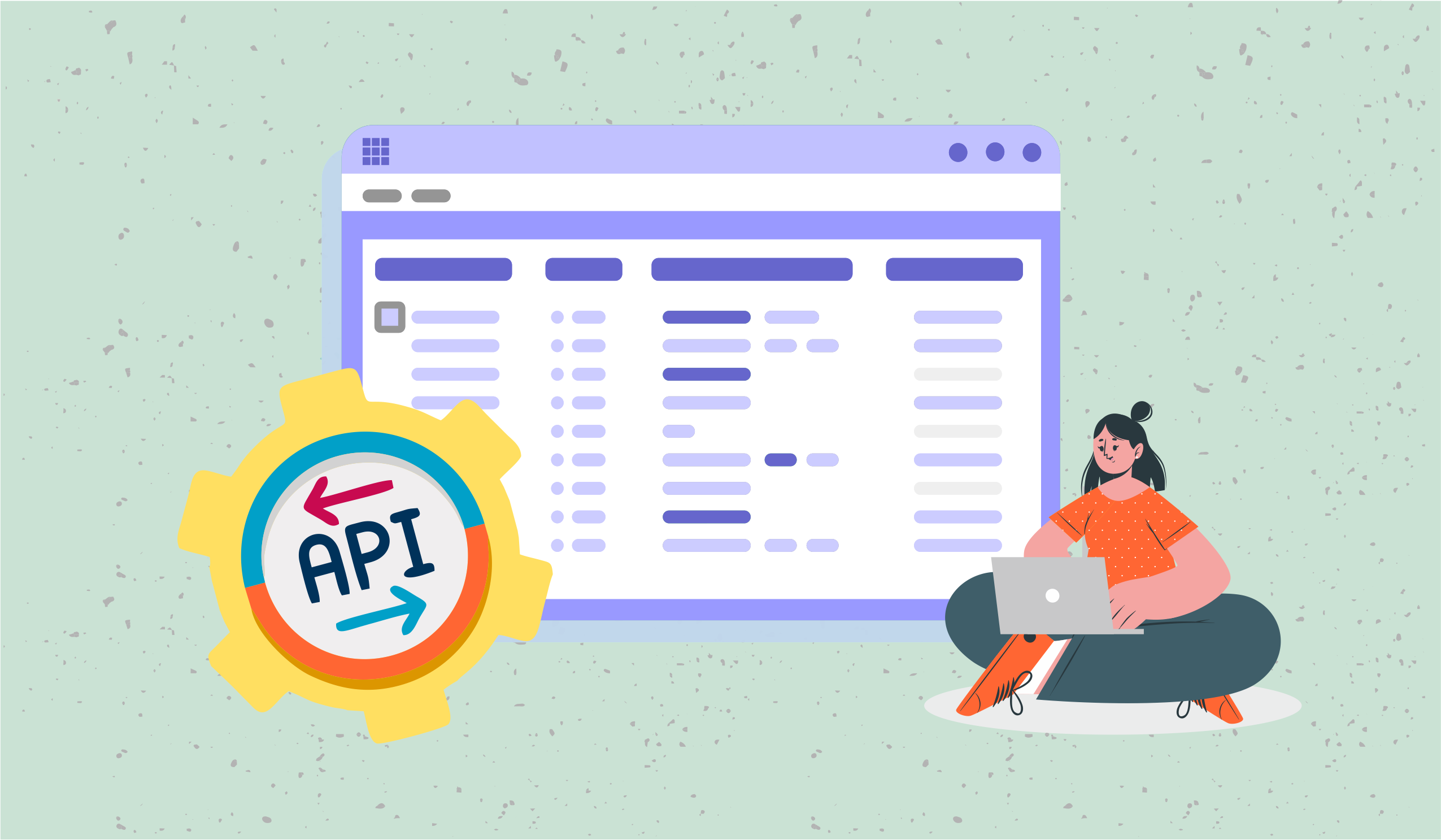What is a Database - A Beginners Guide [Updated 2025]
Learn what is a database, in layman terms.
![What is a Database - A Beginners Guide [Updated 2025]](/blog/content/images/size/w1200/2021/03/data-1.png)
Whether you run a small business like marketing agencies, finance company, real estate company, a startup venture, or a multinational organization, you must be required to handle large quantities of data. This is usually done using a database.
Did you know that the database management system revenue grew by 18.2 percent from 2017-2021, with a revenue of over $46 billion?
Here, we will give you a brief overview of the meaning of data and database and the various advantages of using a database.
What is Data?
In this era dominated by technology, data availability is the key to any business or organization's success. Before we go any further into its importance and management, let us define the term data.
Put in simple words, data can be defined as a collection of a distinct unit of information. It refers to each item that is stored in a database. Data can be stored in multiple different forms depending on its requirement and usage. It can be in the form of text, numbers, images, or any other media.
Raw data collected from different sources have to be processed and cleaned before it can be used to make decisions in any organization.
What is a Database?
Now that we have defined data, let's try to understand the meaning of a database.
The database is an organized collection of structured information or data stored in a computer in electronic format. It enhances the accessibility and manageability of the data and makes it easier to update and alter. The use of a database also increases the accuracy and reliability of the data. In short, we can describe a database as any place where data is organized and stored.
Consider a simple computer. A computer takes in data as an input, processes the data, and provides an output in the form of some meaningful information that will help us make some decisions. This input or data can be in the form of text, numbers, media, etc. Now, the question arises. Where will the computer store the input information? Also, how will it ensure that the right information is available to it at the right moment?
This is where the use of a database comes in. It can help solve both issues.
Databases are used almost everywhere today. From the OTT platforms you subscribe to, the software in banks, to the records that the government keeps, everything is powered using a database. When you enter a query in Google, your search is carried out using a large database. Regardless of its nature or scope, almost every organization uses a database in some form or the other.
Let’s give you a brief idea about the various components of a database in general.
Firstly, it consists of the hardware or the physical devices that are used to power a database. This includes the input devices, output devices, storage devices, etc. It links the computer with the real-world system.
Secondly, the component is the software. Any application, software, or program that is used to run a database falls under this category.
Lastly, and perhaps one of the most important components, is the data itself. Whether it’s the actual data or the operational data, a database is meaningless without some form of data.
A database system is a term used to describe the collection of data, the database management system, and any other applications that might be used in the process of storing and processing data.
According to the definition of the database, it stores information or data in an organized manner. However, this data needs to be arranged and organized based on consistent, rational, and logical underlying principles.
Here, we can describe another term used in databases, that is, a data model. A data model is a term used to describe the logical structure of a particular database.
To Get Free & Customized Template Today !! Schedule Demo Today OR Sign Up Now
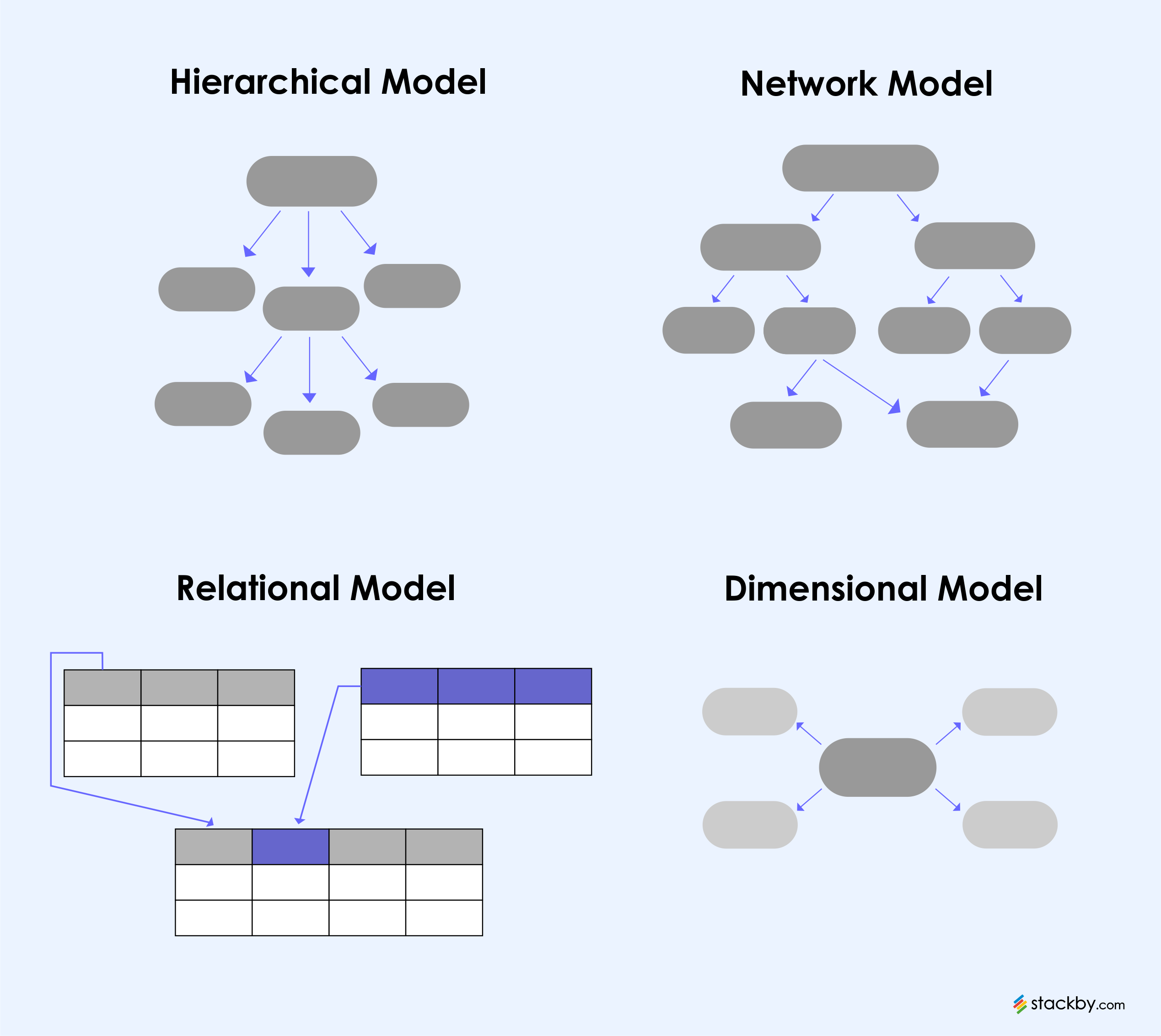
Evolution of a Database
The databases that now form a part of our everyday life have evolved and changed through the years. With the changing requirements of the organizations and the advent of new technology, the shape and scope of a database underwent rapid changes.
The origin of the current database can be traced back to the 1960s. This era saw an exponential increase in the use of computers due to its cost-effectiveness. As a result, the use of databases started increasing. Out of the many available models, two were extremely popular – CODASYL and IMS. Along with this, SABRE used by American Airlines was also well regarded.
The period starting from the 1970s revolutionized the way people approach databases. It witnessed the development of the relational database model. The basic principle of any database system is that the logical organization of the data is disconnected from actual physical storage and was proposed at this stage of development.
The major relational databases that entered the market were Ingres and System R. The term Relational Database Management System also gained relevance during the same period. As time progressed, the late 1970s saw the introduction of the Entity-Relationship Model, where users could focus their attention on data applications.
Use free Excel spreadsheet for business expenses [2025]
Eventually, the hierarchical and network database model's popularity faded away, and the relational database became the most commonly used term. In addition, SQL now became the standard query language.
As the end of the century approached, new tools were developed and introduced, including Oracle Developer, PowerBuilder, etc. Excel and access were also developed for personal productivity enhancement. The use of the client-server database system was now commonplace. In the late 1990s, there were several open-source database solutions in the market. The database was also used in point-of-sale transactions that were rapidly increasing at the time.
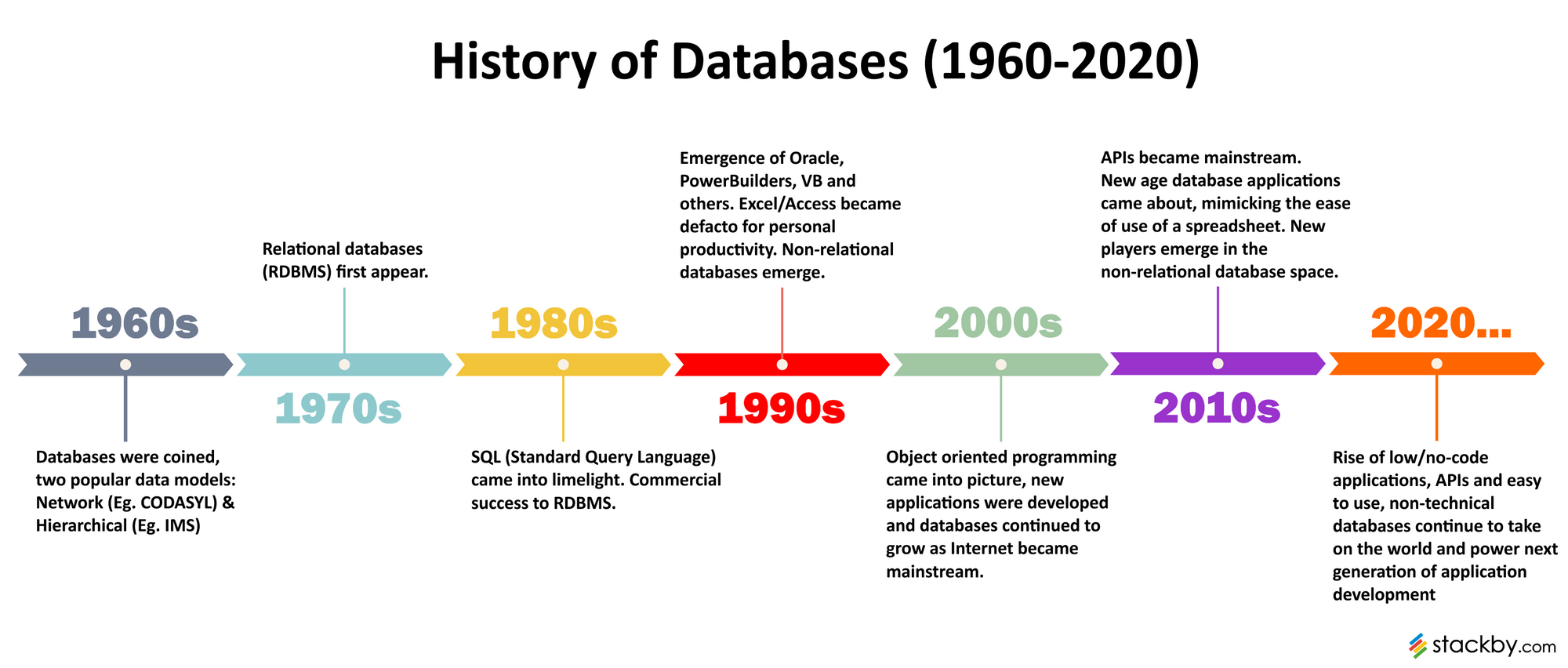
Databases Today
From the regular internet searches to our social media accounts, everything is powered by a database today. Whether you run a small business, a startup venture, or a multinational organization, you will require a database for effective data storage and evaluation. With rapid advancements in technology, new features are being added to databases every day, making them more efficient and useful.
➤ 12 Database Software for Small Business
➤ Get A Free Template for Startup Venture
What are the different types of databases?

The classification of a database into different types is done based on the underlying data model used in each case. Without going into many details, we have listed the various types of databases here.
- Relational Database
- Graph Data Model
- Object-Oriented Database
- Cloud Database
- Operational Database
- NoSQL Database
- Distributed Database
These were the few different types of databases generally used. However, the common and popular type of database is the one with the Relational Data Model. In this form of a database, the data or information is stored in data points or two-dimensional tables related to each other. It is a straightforward and intuitive method of representing data. A relational database is generally used if you’re looking for high levels of data integrity. It also scores highly on the scalability meter.
What is a Database Management System?
A database is controlled and managed using a database management system, that is, DBMS. It allows users to enter, store, modify and alter databases efficiently and easily.
DBMS enables users to define, store, and retrieve data from a particular database. In other words, it can be defined as a digital repository where data can be stored and managed. It provides its users with a logical overview of the entire process used to process and manipulate the data.
It reduces the complexity of data and processes the data to extract meaningful information from the same to make an important decision. A database management system also provides users with a high degree of data security. Most DBMSs have an inbuilt data backup and recovery system that can prevent any form of data loss under uncertain circumstances. It helps in maintaining data consistency, especially when multiple users have access to the same data.
A few well-known examples of database management systems include MySQL, Oracle, FileMaker, MongoDB, and Stackby. Depending on your requirements, you should choose a DBMS that has all the features.
Explore the Devart website to discover a wide range of SQL database management software, perfect for both beginners and advanced users. Their tools, such as dbForge Studio for SQL Server, offer intuitive interfaces and powerful features, making SQL management accessible to all. Whether you're just starting or looking to enhance your SQL skills, Devart's solutions can simplify your database tasks.
Here, it is important to introduce you to another concept, that is, database schema. A database schema is a logical configuration or skeleton structure that provides users with a logical view of the entire database. Put in simple words, it is a blueprint for a particular database. It describes each aspect in detail, including how the data needs to be stored, processed, and implemented. The presence of a schema ensures that the data in your database will be organized according to a particular set of rules and procedures. This is what distinguishes a database from a spreadsheet or a list.
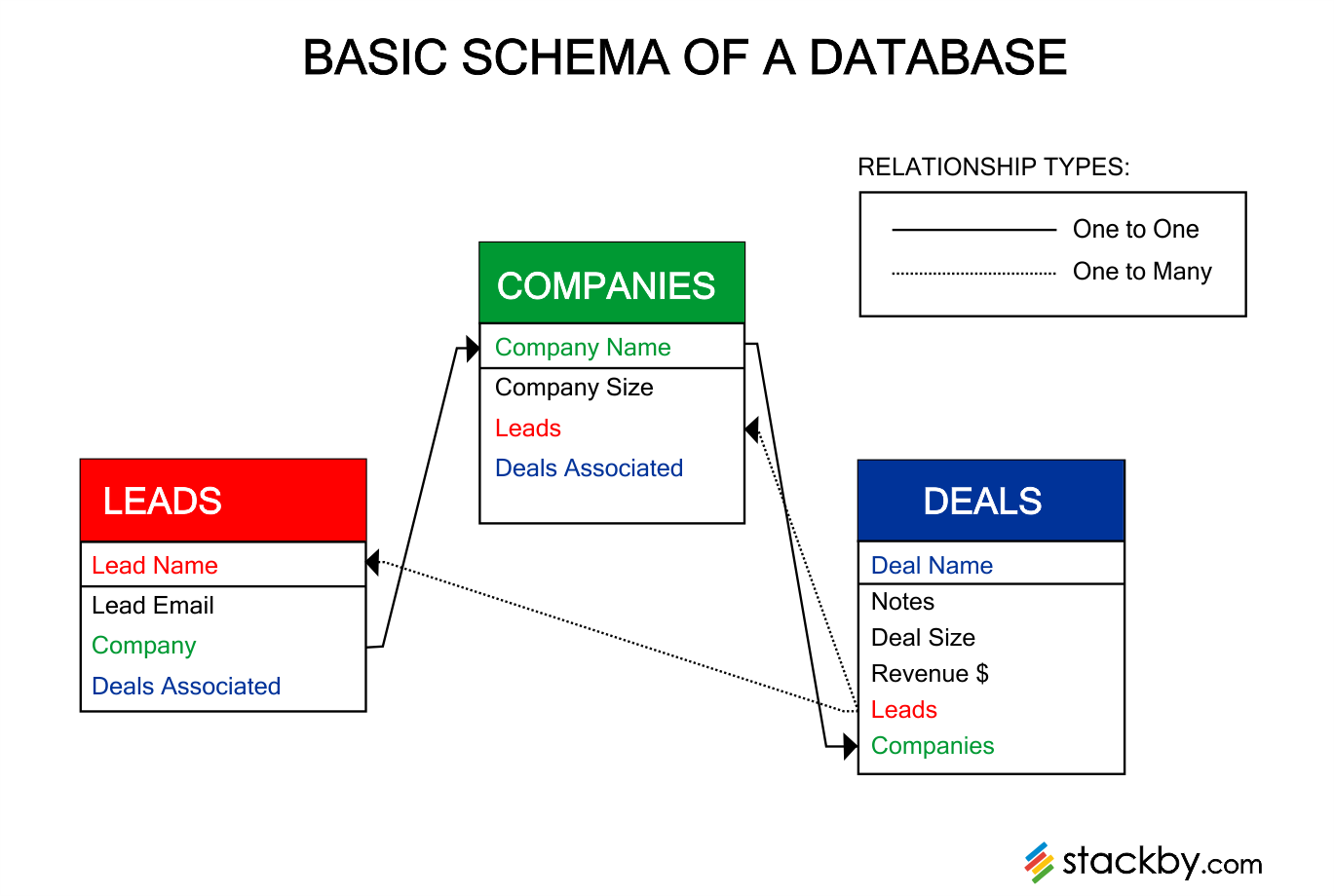
Components of a DBMS environment
A database management system allows you to define, create, update, and administer databases. It is a collection of various components, and each one has its specific function that is essential to data management. Here, we have listed all the major components of a DBMS.
- Hardware – Under hardware, all the physical devices used in a DBMS are covered. This includes the computer, input/ output devices, storage devices, etc. The hardware allows the software to interact with the physical world.
- Software – This covers the programs and applications that are used to manage a database. This includes the DBMS software itself, the OS, the network software, and other essential applications.
- Data – The primary purpose of the database management system is to manage and process data. This data includes both the actual data and the metadata.
- Procedures – The documented procedures guide the users on how to use and manage the DMBS.
- Database Access Language – This language allows users to access the data, enter new data, alter data, and process the required data. Users can enter a set of commands and get the desired results.
- Query Processor – The function of this component is to process the given input and convert them into low-level instructions. It is then sent to the data time manager.
- Run Time Database Manager – This is the central component of the DBMS and is also called a database control system. This component interacts with the user-entered queries and handles the same at run time. It maintains the consistency and integrity of the data.
- Data Manager – This is also referred to as cache manager. It also functions as a backup in case of data failure.
- Database Engine – The engine stores, processes, and secures the data and provides controlled access and processing capabilities.
- Data Dictionary – Here, the information about the database is stored. It is a read-only table and contains information about the data used in the firm.
- Report Writer – This component extracts information from different files and presents it in a specified format.
Since Stackby is built entirely on an easy-to-use spreadsheet style interface, you don’t have to think twice about any of these components. Even though there are various facets to a DBMS, you can easily make use of Stackby to organize your data, build relationships across tables, collaborate in real-time with your team members and be up-to-date about whatever is happening within your team.
What is the difference between a database and a spreadsheet?
Both spreadsheets and databases are efficient methods or mediums of storing information. So, the question arises. What is the difference between the two? The difference lies in the way they store and manipulate the data. Besides, they also differ in terms of accessibility of data and capacity of data storage and manipulation.
Consider a widely used example of a spreadsheet, that is, Microsoft Excel. In a spreadsheet, as we already know, the data is stored in cells. However, in a database, the data values are stored in tables. The table is given a name and is composed of columns and rows.
Spreadsheets are used to analyze data to a limited extent. They are not used to deal with long-term data storage. A database, on the other hand, is used to store and process large amounts of data. They are more useful when more than one person is required to work on the same data. Data sharing and data reporting are extremely easy in the case of a database. The processing power of a database is also comparatively high.
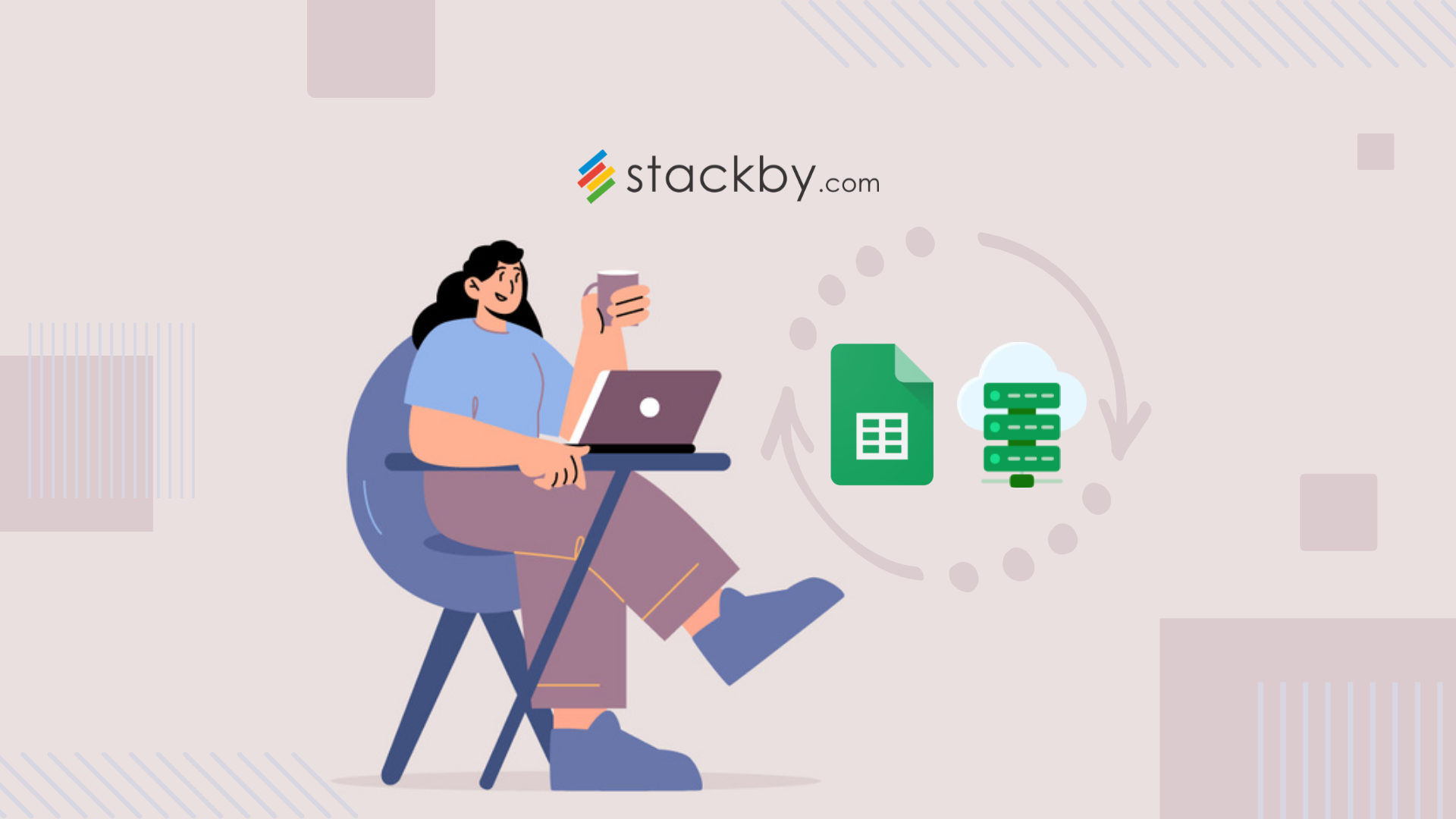
Advantages of Using a Database
Now that you have a basic idea about a database, you must be wondering what is so special about it. Why should you use a database over a spreadsheet? Why bother with a database at all? Here, we will answer all your questions.
Databases give structure to your data
A database will allow you to structure your data in a specific format. With the ability to handle multiple users and large amounts of data, databases help users manage their data in a defined and structured manner. You can perform all the required computations on the data and store the same in interrelated tables and according to a logical format.
Databases reduce data redundancy.
In a file-based management system, there is a chance that the same file is stored in multiple different locations across different systems. This creates multiple copies of the same file. This causes data redundancy and unnecessary wastage of storage space.
However, this problem can be avoided in a database. A change in a particular file is automatically reflected in other copies. The chances of duplicate data or data redundancy are very low.
Databases are scalable.
One of the biggest advantages of a database is its ability to handle massive quantities of data easily. Although the need to handle such quantities of data might not arise every day, using a database will benefit you for years to come as you accumulate data over time.
As the scale and size of your business grow, the need to migrate from a spreadsheet to a database will increase. With more data being added every day, your spreadsheet will slow down and work ineffectively. A shift to a database will provide you with increased storage capacity and higher processing power.
Databases have multi-user capacity.
In any company, the chances of an individual working all by himself are very low. Employees work in teams and are required to coordinate with one another. The database becomes very useful in such cases where multiple people require access to the same data. It allows multiple users to work together and process a shared set of information.
Remote working is the need of the hour, which automatically increases the need for more effective team collaboration. This not only helps you to be in a loop with each other, it also helps you in learning from each other. Online collaboration tools, and databases are one of the best ways to go around this.
An added advantage, in this case, is the maintenance of data consistency. If many users have access to the same data, then the change made by one user may be in contradiction with the change made by another user. This can affect the consistency of the data. However, databases have in-built mechanisms that ensure data consistency.
With the help of a database, you can also control who has access to the data. On the other hand, no such action can be taken in the case of a spreadsheet.
Databases are reliable.
Although a certain degree of human error is inevitable, databases reduce it to a large extent. Due to the multiple access controls and other inbuilt safeguards, the reliability of a database is high. Around 90% of spreadsheets have some form of error, which has resulted in financial loss for 1 out 5 large businesses around the world.
Data in a database is arranged and organized according to a defined structure. There are multiple mechanisms put in place to ensure that the data remains error-free. Due to some unforeseen circumstances, if you lose your data, it can be retrieved using the database's data backup and recovery system.
On the other hand, due to the lack of a database schema in a spreadsheet, the chances of encountering erroneous data are high. Unlike a database, the data entered and processed here do not have to abide by any rules or logical framework.
Databases are versatile and powerful.
In addition to reliability and consistency, databases are also known for their high processing power and ability to support many queries. You can easily enter a 'query' in your database and find the answer to all questions concerning the data.
For example, you can find out the number of sales in the last quarter or the performance of a certain product in a particular location. The results of your queries can be stored as a view. Views are a subset of the original dataset and help the users focus on specific pieces of information. You can also ensure that only a limited number of people have access to this data.
The databases that are being developed today do not require their users to possess any coding experience. They come equipped with interactive and easy-to-use interfaces that can be used by beginners too. Stackby is a no code platform to make sure that the users have access to various features - like relational database features , connecting columns to APIs, call data from various services, setup automations , etc. - without having to write any kind of code.
Databases have high data security.
Data is the key to the success of any business venture today. Companies invest substantial time and resources into gathering and processing data to extract meaningful information. Hence, it is essential to ensure the security of this data.
In addition, you can use a VPN tunnel to further protect your data by encrypting your internet connection and ensuring that data transmission remains secure.
There are managed detection and response benefits that you can integrate, which play a crucial role in protecting valuable data and responding to potential security threats.
Databases ensure data security by allowing only authorized users to get access to the data. You can also set a username and password to increase security and reduce access to the data. Make sure to use a strong, unique password to further enhance the protection of your information. This also facilitates data privacy.
You can also set custom permissions like Owner, Creator, Editor, Commenter or View Only for each of your databases and manage access control across your team easily, with tools like Stackby.
What will you get in Stackby’s database?
Unique Column Types
Stackby offers over 25 different column types to its users. Column types allow you to visualize and customize your data in a specific manner. If you set a particular type, the column will only accept the data type it is configured to take. Users can choose from different options, including Number based, Date and time, Short text, Long Text, Drop-downs, Attachments, Rating, Email, Phone number, etc.
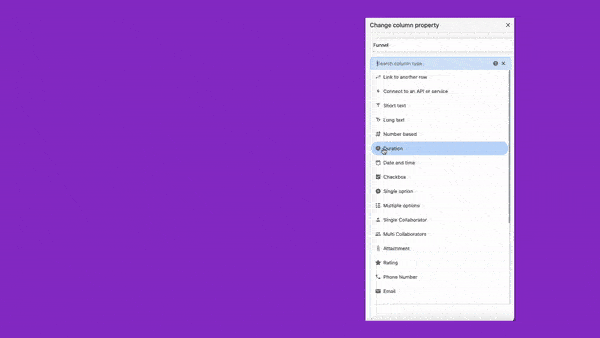
Relationship across tables
One of the key advantages of working with a database is the ability to define relationships across tables. In other words, it is also referred to as a relational database. Stackby allows you to configure one-to-one, one-to-many, and many-to-many relationships.
Let’s take the example of a Content Marketing & Distribution Template. It has three different tables, that is, Content, Channels, and Team. You can link these tables together to create relationships among them and improve your productivity and efficiency.
You can link one record of a table to another record of a different table in a one-to-one relationship. You can also link a single record of one table to multiple records of a different table. The latter can be described as a one-to-many relationship.
In a many-to-many relationship, you can link a record to multiple records from different tables. You can use the links you’ve formed to try out the lookup function, aggregate, or summarize the linked records across different tables.
You can have a look at the following video for a better understanding.
Lookups & Aggregation
The VLOOKUP functions in spreadsheets can be quite complex and difficult to use. However, if you choose Stackby as your preferred database, you can do the same thing easily.
Using the Lookup column type function, you can bring data from a different table into your current table with a single button click. Keep in mind that before using the Lookup function, you should link the tables.
Besides, you can also use the lookup to count the data of a different table.
You can also summarize the information of the linked records using aggregation. You can aggregate by SUM, AVERAGE, MIN, MAX, COUNT and more.
You can have a look at the lookup, or the aggregation video for better understanding.
Conditional Lookups and Aggregation
In Stackby, you can also add filters along with lookup. This is referred to as a conditional lookup.
Adding filters follows the same procedure as setting up a lookup. You can use the toggle to turn the filter on or off according to your requirement. You can filter the data according to different categories in your table.
This allows you to view the required data and filter out the unnecessary entries.
Views
Stackby offers multiple views that allow you to view your data in different formats according to your current requirements. You can enter and view your data in the Grid, Kanban, Calendar, Forms, and Gallery format. While the Grid view gives you a detailed description of your data, the Kanban view displays the data in the form of a pipeline, and the Calendar view allows you to keep track of important deadlines. You can also build database forms to collect data and it automatically syncs it with your table.

Real time collaboration
Stackby offers real-time collaboration to its users. You can bring your entire team to the same platform and work together seamlessly. It allows users to share their workspace with multiple team members.
Using Stackby, you can comment at the row level. You can also use the ‘@mentioning users' option to address specific team members. To ensure that the work is done on time, you can also add checklists, set deadlines and reminders. Stackby will send you a notification at the set time.
FAQs About Database :
What is an example of a database?
Some examples of databases include SQL Server, Oracle Database, Sybase, Informix, and MySQL.
What is a database in SQL?
A Database in SQL is a collection of tables that store a specific set of structured data. Each row and column is designed to store a certain category of information.
What are the functional components of DBMS?
The functional components of a DBMS are hardware, software, data, procedures, database access language, query processor, runtime database manager, data manager, database engine, data dictionary, report writer.
Why do I need DBMS?
DBMS enables users to define, store, and retrieve data from a particular database. In other words, it can be defined as a digital repository where data can be stored and managed.
How much does a DBMS cost?
The cost of a DBMS varies from as little as $20/user/month to $999 for an entire enterprise and much more. It depends on the scope of use of the database and the number of features provided. If you’re looking for an easy to use cloud based online database, you can try out Stackby for as low as $5/user/month for personal use and from $9/user/month for teams.
What businesses need a DBMS?
Almost all businesses use a database management system from different sectors across the globe. Any business that deals with data (basically, all of them!) will require a database to manage it.

Conclude : Wrapping Up
If you need to manage information, a database is your answer. Unlike a spreadsheet, a database will improve your productivity and decision-making capacity.
You don’t even need any prior coding experience to work on a database. Most of the popular databases are self-explanatory and extremely easy to use. Choose the right database for your company according to its goals and requirements.
Build your relational databases in minutes with Stackby.
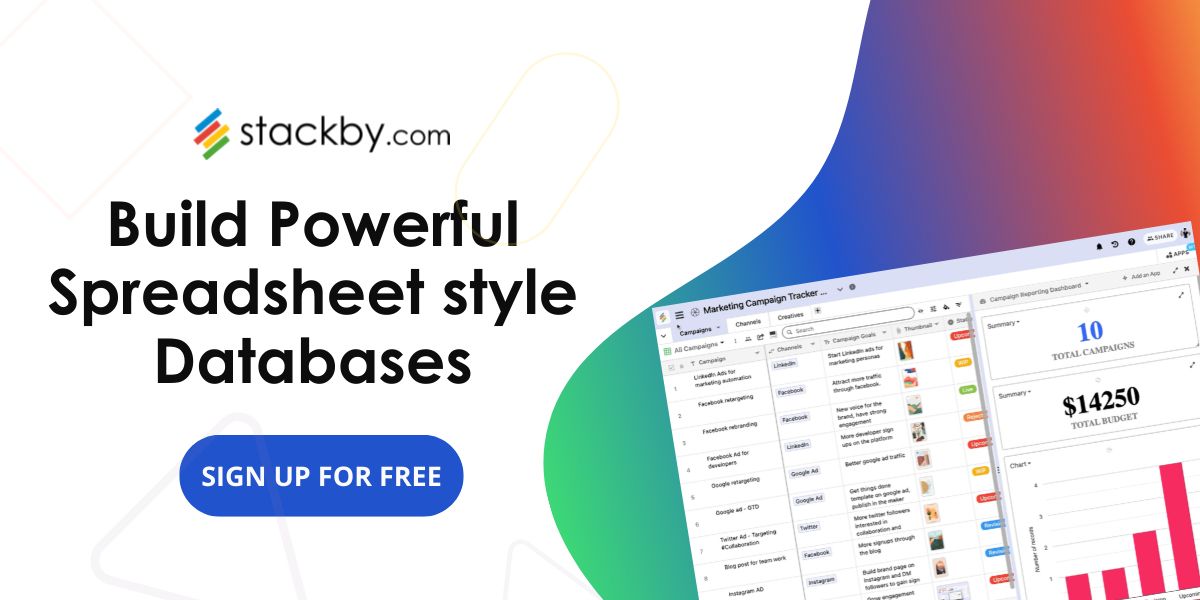


![A Simple Guide on Workflow Management Software [Updated 2025]](/blog/content/images/size/w960/2021/12/work-management-blog.png)


